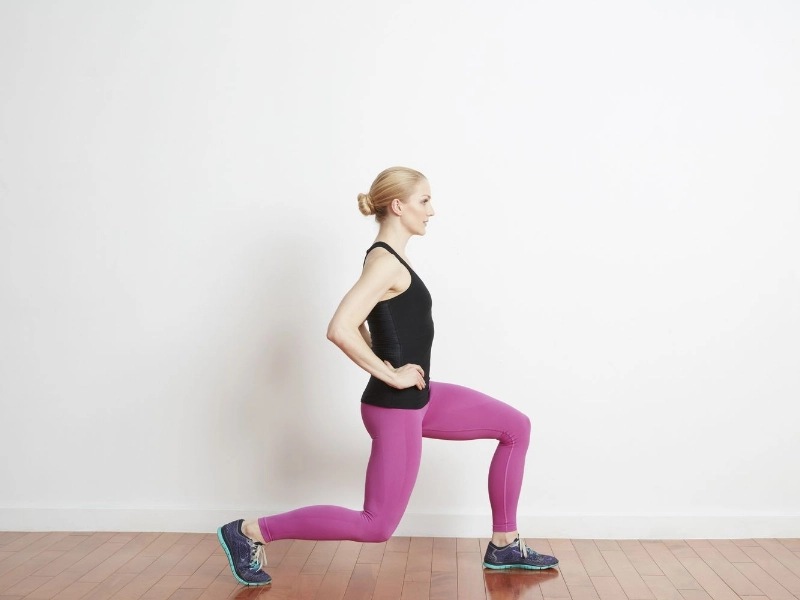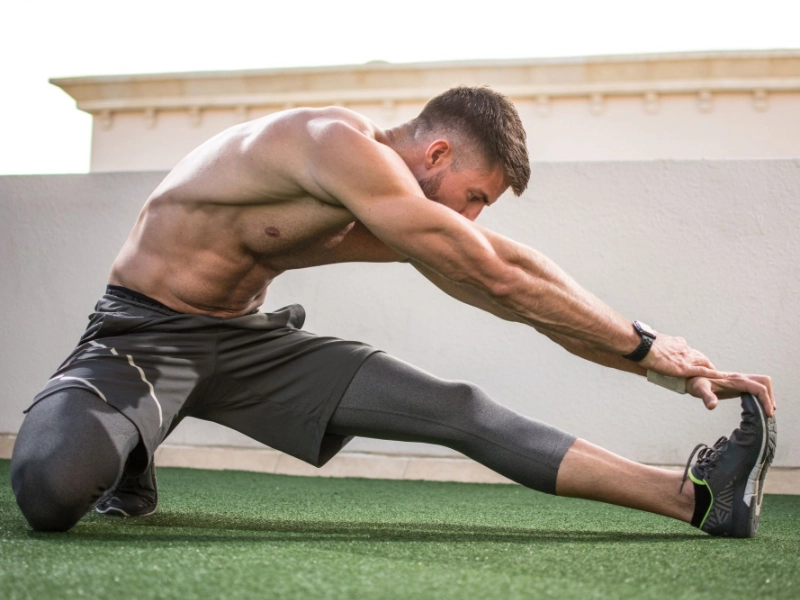Many climbers have the terrible habit of warming up first and then proceeding directly to their hardest route. This may result in a flash pump, a sudden weariness that can prevent climbing. Instead, perform a set of active warm-up activities. Performing controlled movements throughout your body's range of motion, such as arm circles, is known as dynamic stretching.

 In addition to stretching, a decent warm-up should incorporate some fundamental strength training. Your strength and muscle lubrication will increase as a result, reducing the risk of injury and enhancing performance.
Steer clear of ballistic stretches, which include bouncing in and out of a position like jumping rope, and static stretches, which involve holding a posture for extended periods of time. Instead, concentrate on dynamic motions that replicate the body positions utilized during climbing. These will allow the tendons and muscles to warm up without overstretching them and causing harm.
To get the entire body moving and prepared for climbing, try some leg swings, lunges, and arm circles. Shoulder rotations, which include lying back and carefully rolling the shoulders in a controlled circle five times in each direction, are another excellent strengthening exercise. This will increase blood flow to the forearms and stretch and wake up the shoulder muscles. This is an excellent way to strengthen your neck muscles for climbing, especially in the bouldering arena where you frequently have to crane upward.
In addition to stretching, a decent warm-up should incorporate some fundamental strength training. Your strength and muscle lubrication will increase as a result, reducing the risk of injury and enhancing performance.
Steer clear of ballistic stretches, which include bouncing in and out of a position like jumping rope, and static stretches, which involve holding a posture for extended periods of time. Instead, concentrate on dynamic motions that replicate the body positions utilized during climbing. These will allow the tendons and muscles to warm up without overstretching them and causing harm.
To get the entire body moving and prepared for climbing, try some leg swings, lunges, and arm circles. Shoulder rotations, which include lying back and carefully rolling the shoulders in a controlled circle five times in each direction, are another excellent strengthening exercise. This will increase blood flow to the forearms and stretch and wake up the shoulder muscles. This is an excellent way to strengthen your neck muscles for climbing, especially in the bouldering arena where you frequently have to crane upward.
 Pay special attention to the muscles in your chest and legs that are required for climbing during this portion of your warm-up. Execute static stretches that concentrate on the following muscle groups: torso - spinal twists; legs - lunges; shoulders - arm circles.
It's time to undertake some dynamic on-the-wall climbing after your body is warm enough and prepared to climb. Start with a couple of boulder problems or easy routes that are roughly three grades below your steady upper-grade.
This is because pushing yourself too hard too soon might cause unanticipated physical pain and even a false sense of confidence. Instead, it's better to ease into your workout gradually. Additionally, this will enable your tendons and muscles to adapt to the increased demands of climbing, lowering your chance of injury.
Pay special attention to the muscles in your chest and legs that are required for climbing during this portion of your warm-up. Execute static stretches that concentrate on the following muscle groups: torso - spinal twists; legs - lunges; shoulders - arm circles.
It's time to undertake some dynamic on-the-wall climbing after your body is warm enough and prepared to climb. Start with a couple of boulder problems or easy routes that are roughly three grades below your steady upper-grade.
This is because pushing yourself too hard too soon might cause unanticipated physical pain and even a false sense of confidence. Instead, it's better to ease into your workout gradually. Additionally, this will enable your tendons and muscles to adapt to the increased demands of climbing, lowering your chance of injury.
 Climbing requires more than just arm strength; your legs must also have strength and endurance. These muscles are better prepared for the demands of climbing with a thorough cardiac warm-up.
Cardiovascular workouts such as walking, jogging, or even just going up and down a few stairs are very beneficial and practically portable. They quicken your heartbeat, which enables your muscles to receive more blood and oxygen and function more effectively. Simply stay away from any bouncy motions that can put strain on your muscles, including jumping.
Slider movements are another excellent cardiac exercise. You can utilize the floor as a climbing wall by flagging (both inside and outside), high stepping, stretching your knees, and grabbing for "holds" with your opposing hand and foot. This helps with balance and stretches out your joints.
Once your legs are warmed up, begin with a few easy routes to gain an understanding of the climbing grade for the day. Every route should be climbed to a tiredness point that is around two number grades below your maximum.
Climbing requires more than just arm strength; your legs must also have strength and endurance. These muscles are better prepared for the demands of climbing with a thorough cardiac warm-up.
Cardiovascular workouts such as walking, jogging, or even just going up and down a few stairs are very beneficial and practically portable. They quicken your heartbeat, which enables your muscles to receive more blood and oxygen and function more effectively. Simply stay away from any bouncy motions that can put strain on your muscles, including jumping.
Slider movements are another excellent cardiac exercise. You can utilize the floor as a climbing wall by flagging (both inside and outside), high stepping, stretching your knees, and grabbing for "holds" with your opposing hand and foot. This helps with balance and stretches out your joints.
Once your legs are warmed up, begin with a few easy routes to gain an understanding of the climbing grade for the day. Every route should be climbed to a tiredness point that is around two number grades below your maximum.